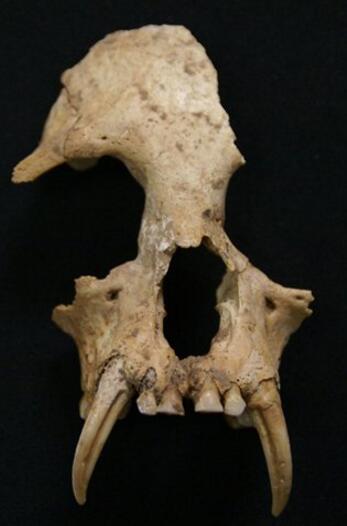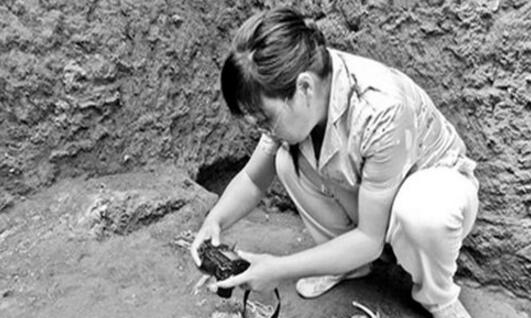Gibbon skull found in grandma's tomb of 1st Chinese emperor, sheds light on pet-raising history
Researchers confirmed Monday that an ancient species of gibbon, a type of ape, whose bones were uncovered in a burial pit built thousands of years ago in Northwest China, is extinct.
The experts put the bones through DNA tests to establish their link to existing species of gibbon.

The ancient gibbon's skull excavated by archaeologists from a burial pit in Northwest China's Shaanxi Province from 2004 to 2008. Photo: Courtesy of Shaanxi Provincial Institute of Archaeology
"It's the first time that well preserved gibbon bones were excavated from an ancient burial pit," Hu Songmei, a research fellow at the Shaanxi Provincial Institute of Archaeology, told the Global Times on Monday.
The gibbon's bones were found during an archaeological dig between 2004 and 2008 in a burial pit in Northwest China's Shaanxi Province, part of a tomb which experts believed had been built for Xia Ji, the grandmother of Qin Shihuang, China's first emperor.
The tomb was built about 2,200 years ago.
The discovery excited Hu, who focuses her research on animal archeology. "It is rare to have those bones since the bones of primate animals easily degrade after death," Hu said.
Experts from the institute together with scientists from the UK have been conducting analysis on the remains of the gibbon since 2012, and reached a conclusion: The gibbon was not of any current species.
"Bones of other primates were found in previous digs, such as the bones of golden monkeys. The gibbon bones are even more precious since that species is extinct," Hu said.

Shaanxi Provincial Institute of Archaeology researcher Hu Songmei takes photos of the excavation of the Qin Dynasty burial pit. Photo: Courtesy of Shaanxi Provincial Institute of Archaeology
Some endangered species of golden monkey and gibbon are listed as first-class State-protected animals in China.
During the past 2,000 years, Hu said that the number of gibbons has dramatically decreased in China due to environmental changes and human activity such as hunting and the cutting down of forests.
Bones of other wild animals were also found in the same burial pit. "There was one skeleton of gibbon, together with that of a leopard, a lynx, a crane, a sheep and two black bears," said Zhang Tian'en, leader of the archaeological dig project.
An iron chain and cages were also found in the pit together with the animals, Zhang told the Global Times.
Hu said that those wild animals could have been raised as pets in the royal palace, and were buried with the deceased so that they could, as ancient Chinese believed, continue to enjoy their companionship.
Two such burial pits of wild animals were also found near the tomb of Qin Shihuang and at the Hanyang Mausoleum.
.

